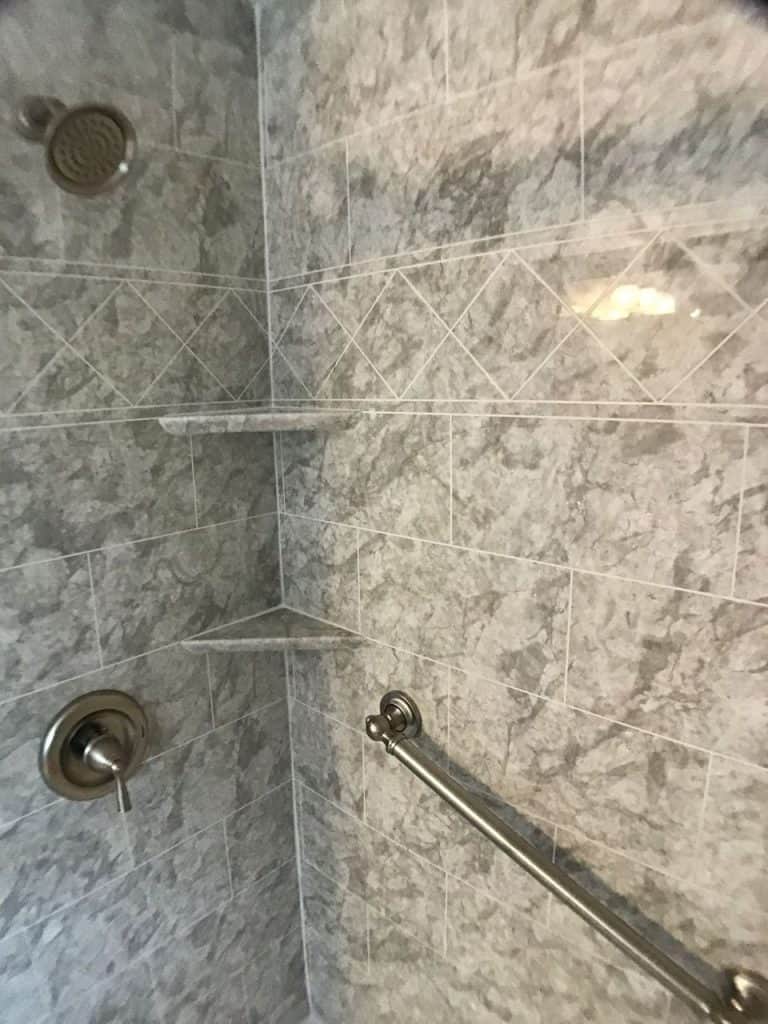5 Things Nobody Informs You around Shower & Tub Wall Panels
5 Things Nobody Informs You around Shower & Tub Wall Panels
Blog Article
{Visit My Web Page Are you trying to find advice about Hiring a Plumbing Company? We recommend that you clean your acrylic bathing product made of Delta ProCrylic or Acrylic with Innovex Technology with non-abrasive soaps and cleaners, such as: When it’s time to clean, always use a terry cloth towel, soft cloth or sponge to avoid scratching the acrylic surface. Don’t use abrasive scrubbing pads, steel wool or sponges, cause permanent damage to the acrylic material. If you use a drain cleaner or clog remover, be sure to rinse thoroughly with water so no product is left standing near the drain. Some chemicals and cleaners may deteriorate acrylic surfaces, causing cracks and, potentially, property damage. To avoid this, don’t use cleaning products that state on their label that they are not suitable for use on Acrylic, ABS, Polystyrene or Plastic. Be sure to check the label of any product before you apply it to the surface; it’s easier to avoid damage than to try to remedy it. Chemicals we do not recommend using to clean acrylic showers/tubs: When you’re ready to apply sealant, a little planning goes a long way. Pick up some painter’s tape and use it to mask off the seam to help make cleaning up easier. When you’re applying the bead, use a constant, steady speed to avoid an uneven finish. Use a caulk tool or a plastic spoon to work the sealant into the joint. Wetting the tool with denatured alcohol will help create a smooth finish. Follow the directions on the back of the tube for cure time. Certain chemicals and cleaners may deteriorate acrylic surfaces, causing cracks and, potentially, property damage. After you’re finished applying it, clean up the product surface and remove any excess sealant with denatured alcohol. Don’t use solvents (turpentine, lacquer thinner, mineral spirits, paint thinner, MEK, xylene, acetone, naphtha, etc.) that can wreak havoc on an acrylic surface. With a little care and consideration, you can prevent damage to your acrylic shower or tub. Keep a supply of soft cloths handy and remove any damaging products or abrasive scrubbing items from the bathroom to ensure they aren’t around when it’s time to clean. https://www.deltafaucet.com/design-innovation/inspiredliving/how-to-clean-acrylic-shower As a passionate person who reads on 6 Things to Know About When Hiring a Plumbing Services, I imagined sharing that section was a great idea. Sharing is caring. You won't know, you may just be helping someone out. Thank you for going through it.
Polymer baths, shower trays, and various other acrylic shower room ware have come to be much more common in shower rooms in recent times. Thanks to contemporary chemistry we now have choices to enamel and ceramic products for bathroom fixtures. These consist of different polers and also plastic materials. Not as long lasting as well as stylish as enamel as well as porcelain bathrooms as well as components, they are extra inexpensive and offer quite much the same standard function. These materials are simple to manufacture, shop, and transportation as well as in the occurrence of damage, they are easily fixed. Some typical examples of damages to acrylic shower room fixtures include discoloration, fractures, holes, and so on. Let's have a look at some of these issues and fast methods of fixing them.Bathroom Staining
With extended use acrylic bathrooms comes staining or staining. While some spots can be gotten rid of easily, using special chemicals, others require that the bath be resprayed. It is essential to keep in mind that bleach or cleaning agents do really little in removing such staining and they might also aggravate it. A lot of times, these cleaning up representatives cause staining gradually. Aromatherapy oils loosen the dust in many cases therefore recovering the bathroom to its previous glory. Cleaning up and also brightening likewise often. For even more persistent spots, you will certainly require a new layer of finish. This kind of dealing with will certainly need an expert.Chain reaction
Sometimes, individuals try to paint the whole surface area of their acrylic bath by themselves either since they do not like the shade to conceal acnes. However, when they do not like the end result, they apply paint eliminators. You must never use paint eliminator on acrylic bathrooms. Paint removers do not respond with the surface of metal bathrooms, they destroy acrylic baths irreversibly. This develops even more help the specialist. The most effective strategy here is to call a professional for help with changing the bath.Scratched shower or bath surface
Polymer bathroom components are not abrasion-resistant like enamel selections. They are extra susceptible to scratches and much less long lasting. Being an extremely soft product, acrylic scratches can even be hidden without finish or filling. For these, you should look for professional aid for your bath repair work. As an avoidance suggestion, stay clear of utilizing unpleasant sponges when cleaning. Instead, you need to use a straightforward liquid cleanser with a soft pad.Cracked Acrylic Baths
The life expectancy of acrylic and fiberglass bathrooms is up to 15-20 years for shower frying pans and baths, typically. Cracks in an acrylic shower tray are most likely amongst the most convenient issues to repair for a fixing specialist. This is the same for PVC, resin, and other such materials.
Acrylic bathrooms, shower trays, and also various other acrylic bathroom ware have come to be extra usual in washrooms in current times. With extended use of acrylic bathrooms comes discoloration or staining. You need to never ever use paint eliminator on acrylic bathrooms. Paint removers do not react with the surface area of metal bathrooms, they destroy acrylic bathrooms irreversibly. The lifespan of acrylic and also fiberglass baths is up to 15-20 years for shower frying pans and bathrooms, usually.How to clean Acrylic shower
USE THESE NON-ABRASIVE CLEANERS
DO NOT USE THESE CLEANERS
Sealant Application Tips

Plumber